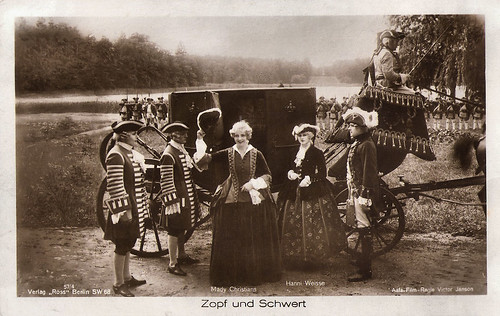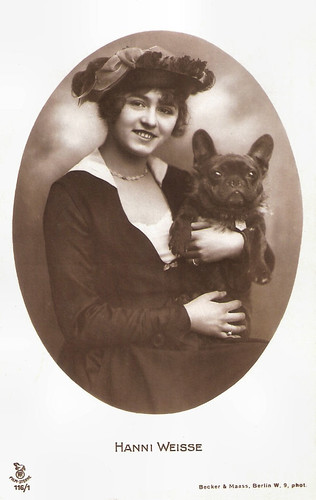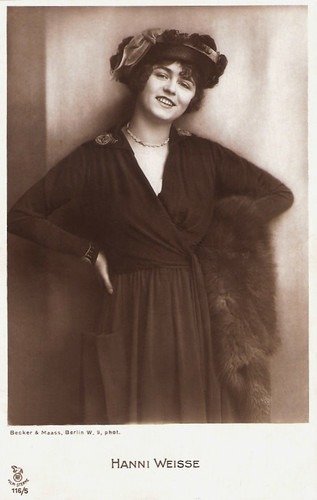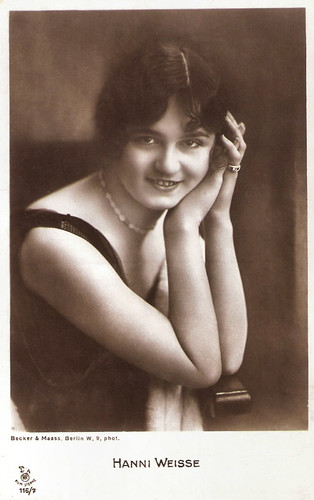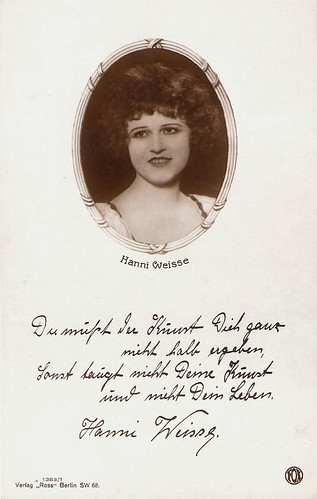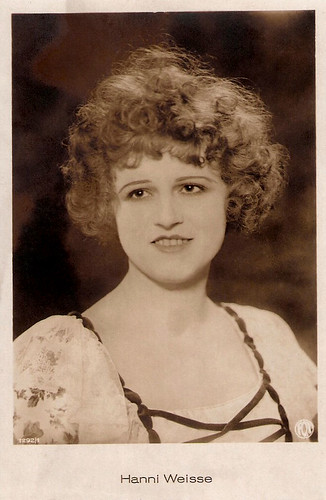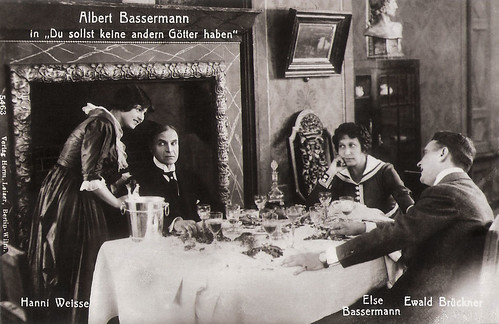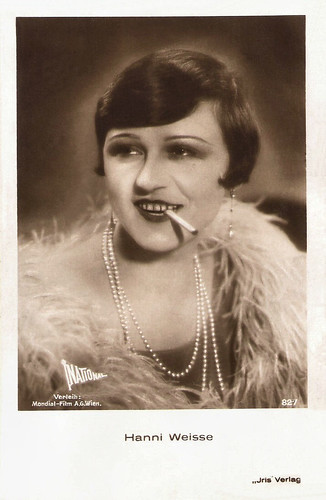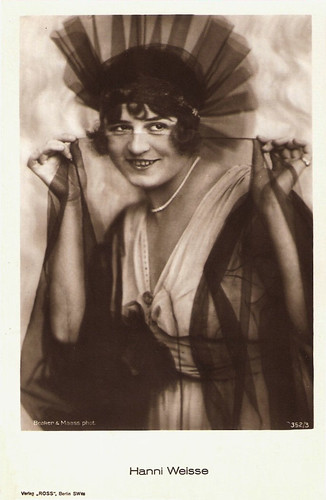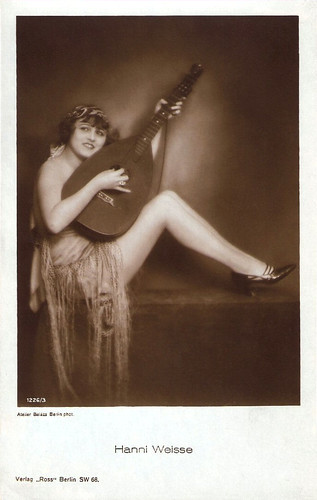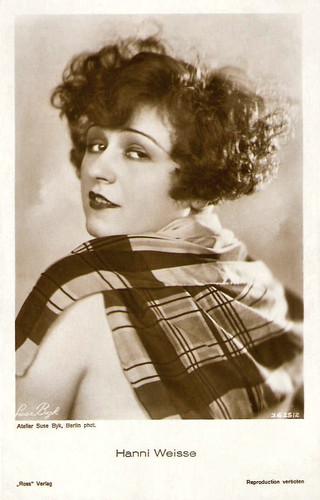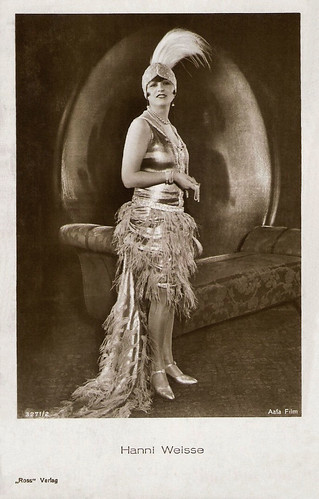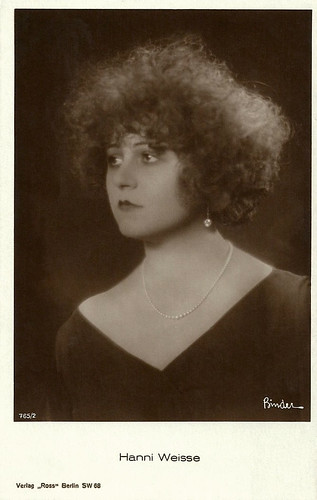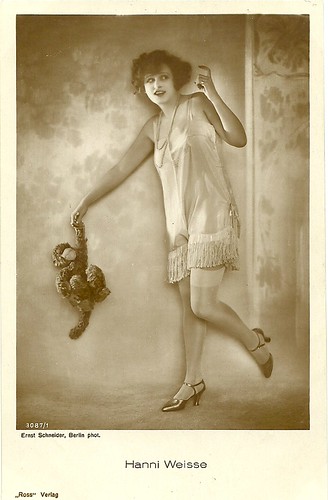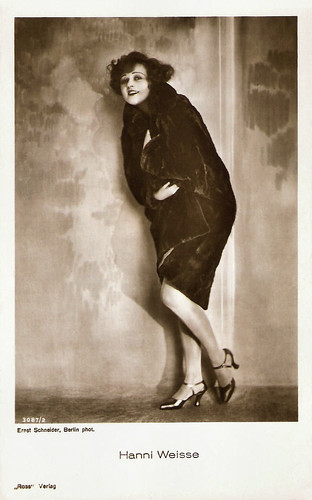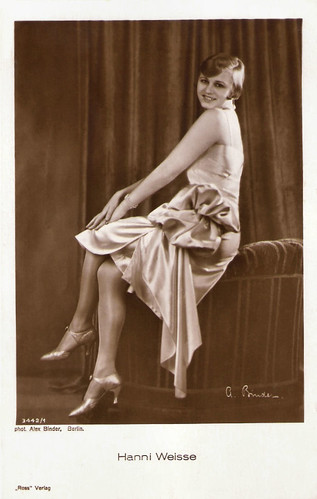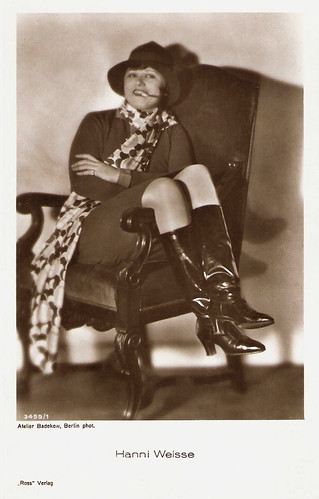In the German silent film Zwischen zwei Welten/Between two worlds (Adolf Gärtner, 1919), the two popular stars Bruno Kastner and Hanni Weisse played a romantic couple. Ross Verlag made a series of four sepia cards with scenes from the film. Only a portrait of Karl Marx in the background of one of the postcards indicates that the film had political content.

German postcard by Verlag Ross, no. 590. Photo: Ring-Film. Bruno Kastner and Hanni Weisse in the German silent film Zwischen zwei Welten/Between two worlds (Adolf Gärtner, 1919). This was the first card of a series of four. The portrait in the back is a classic one of Karl Marx.
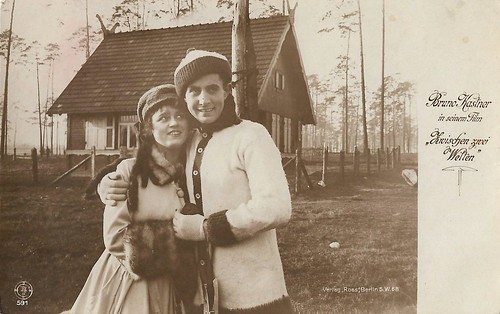
German postcard by Ross Verlag, no. 591. Photo: Ring-Film. Bruno Kastner and Hanni Weisse in Zwischen zwei Welten (Adolf Gärtner, 1919).
In Zwischen zwei Welten/Between two worlds, workers in a factory have a conflict with the managing director Lüders (Magnus Stifter). They won't elect him.
The manager (Bruno Kastner) stands by them, but he is consequently fired. Then the Social-Democrats put him forward as their candidate.
Zwischen zwei Welten was scripted by Bruno Kastner, Paul Rosenhayn and Adolf Gärtner. In addition to Kastner, Hanni Weisse, and Stifter, the other actors in the cast were Olga Engl, Max Laurence, Lina Paulsen, Lucie Mannheim and Gustav Roos.
In February 1919, the German censor decided that Zwischen zwei Welten/Between two worlds was forbidden for juveniles.
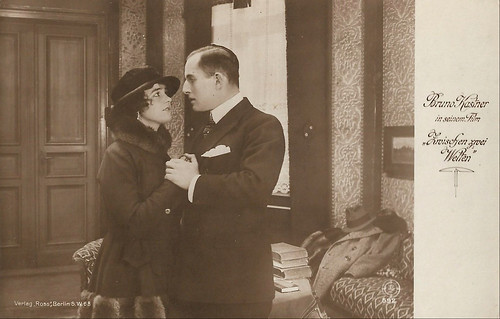
German postcard by Ross Verlag, no. 592. Photo: Ring-Film. Bruno Kastner and Hanni Weisse in Zwischen zwei Welten (Adolf Gärtner, 1919).
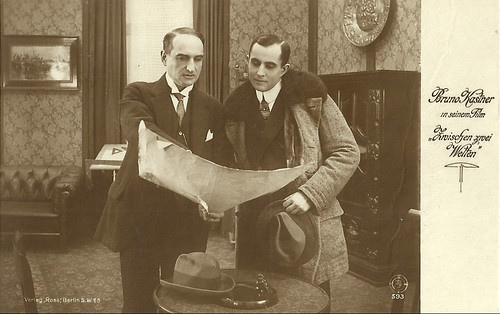
German postcard by Ross Verlag, no. 593. Photo: Ring-Film. Magnus Stifter (left) and Bruno Kastner (right) in Zwischen zwei Welten (Adolf Gärtner, 1919).
Sources: The German Early Cinema Database, Wikipedia, and IMDb.

German postcard by Verlag Ross, no. 590. Photo: Ring-Film. Bruno Kastner and Hanni Weisse in the German silent film Zwischen zwei Welten/Between two worlds (Adolf Gärtner, 1919). This was the first card of a series of four. The portrait in the back is a classic one of Karl Marx.

German postcard by Ross Verlag, no. 591. Photo: Ring-Film. Bruno Kastner and Hanni Weisse in Zwischen zwei Welten (Adolf Gärtner, 1919).
Forbidden for juveniles
In Zwischen zwei Welten/Between two worlds, workers in a factory have a conflict with the managing director Lüders (Magnus Stifter). They won't elect him.
The manager (Bruno Kastner) stands by them, but he is consequently fired. Then the Social-Democrats put him forward as their candidate.
Zwischen zwei Welten was scripted by Bruno Kastner, Paul Rosenhayn and Adolf Gärtner. In addition to Kastner, Hanni Weisse, and Stifter, the other actors in the cast were Olga Engl, Max Laurence, Lina Paulsen, Lucie Mannheim and Gustav Roos.
In February 1919, the German censor decided that Zwischen zwei Welten/Between two worlds was forbidden for juveniles.

German postcard by Ross Verlag, no. 592. Photo: Ring-Film. Bruno Kastner and Hanni Weisse in Zwischen zwei Welten (Adolf Gärtner, 1919).

German postcard by Ross Verlag, no. 593. Photo: Ring-Film. Magnus Stifter (left) and Bruno Kastner (right) in Zwischen zwei Welten (Adolf Gärtner, 1919).
Sources: The German Early Cinema Database, Wikipedia, and IMDb.



